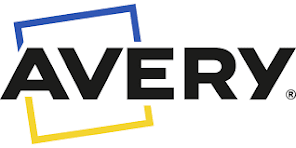Exploring the Pros and Cons of Screen Printing Technology: A Comprehensive Guide
Since decades t-shirt printers have depended on screen printing for creating fabulous styles and trends that lived over generations. Screen printing has always been a preferred medium for casual fabric printing industry. Iron-on designs were yet another popular printing method that was considered as a feasible alternative for screen printing. This was also popularly termed as iron-on transfers. However, these thick rubbery prints were prone to cracking and withering as time went on.
Another issue with iron-on was that the method was time consuming. On the contrary, printing was swift and efficient and also produced comparatively higher quality prints. In t-shirt printing industry, Screen printing has always been the standard printing method. However, with the development of digital printing, screen printing was largely replaced with the new technology.
With advanced designing softwares, the art of graphic designing evolved into a new. Since decades t-shirt printers have depended on printing for creating fabulous styles and trends that lived over generations. screen printing has always been a preferred medium for casual fabric printing industry. Iron-on designs were yet another popular printing method that was considered as a feasible alternative for screen printing. This was also popularly termed as iron-on transfers. However, these thick rubbery prints were prone to cracking and withering as time went on.
Another issue with iron-on was that the method was time consuming. On the contrary, printing was swift and efficient and also produced comparatively higher quality prints. In t-shirt printing industry, printing has always been the standard printing method. However, with the development of digital printing, screen printing was largely replaced with the new technology.
With advanced designing softwares, the art of graphic designing evolved into a new era. In the current job market, designing is considered as one of the most sought after skills. More and more artists are depending on designing softwares to create quick t-shirt and fabric designs. Even though designing work is done by computers, screen printing is still being used for creating the final prints. With the onset of advanced digital printing, the market of printing was further curtailed. In digital printing, you can directly print the computer generated design onto a t-shirt. It is swift and requires no other raw materials like inks or stencils.
Even though, digital printing is widely prevalent in our advertisement and fabrics industry, printing is still being used by several small scale printing companies. Sometimes, the method is used for creating contemporary t-shirt prints known for their modern art designs.
Screen print is more cost effective when compared to digital print. Although screen printers are technically backward, when it comes to per-unit cost, they are far more feasible than digital printers.
With screen printers, the printer has to change the inks and stencils for creating newer designs. However, with digital print machines the colors utilized lasts for a longer duration and one can produce several t-shirt prints without refilling the colors after each print.
Again, screen printing is more time consuming when compared with digital technology. With screen print productivity can be low but it depends on the nature and purpose of the printing. For personal print needs digital printing can be a feasible option but if you are running a fabrics printing firm, you can't possibly depend on digital print for all your printing needs.
Digital printing gives more control over the entire print process than printing. Digital printers have the option of auto-matching colors. Ink matching enables the digital printer to create any color combination out of a base design. This allows the printer to print multiple t-shirts bearing same design but different color combinations. Thus creating multi-colored designs is a quite task if you are using digital printers. But with screen printers you can't change the inks so easily. era. In the current job market, designing is considered as one of the most sought after skills. More and more artists are depending on designing softwares to create quick t-shirt and fabric designs. Even though designing work is done by computers, Screen printing is still being used for creating the final prints. With the onset of advanced digital printing, the market of screen printing was further curtailed. In digital printing, you can directly print the computer generated design onto a t-shirt. It is swift and requires no other raw materials like inks or stencils.
ARTICLE RELATED TO :-
screen printing technology,
how to do screen prints,
silkscreen printing,
screenprint process,
screenprinting process,
process of screen printing,
screen print process,
process screen printing,
screen process printing,
screen printing process,
screen printing types,
types of screen printing,
screen printing steps,
screen printing technique,
screen printing techniques,
silk screening techniques,
different types of screen printing,
silk screen techniques,
silk screen technique,
silkscreen printing process,
screen printing step by step,
step by step screen printing,













